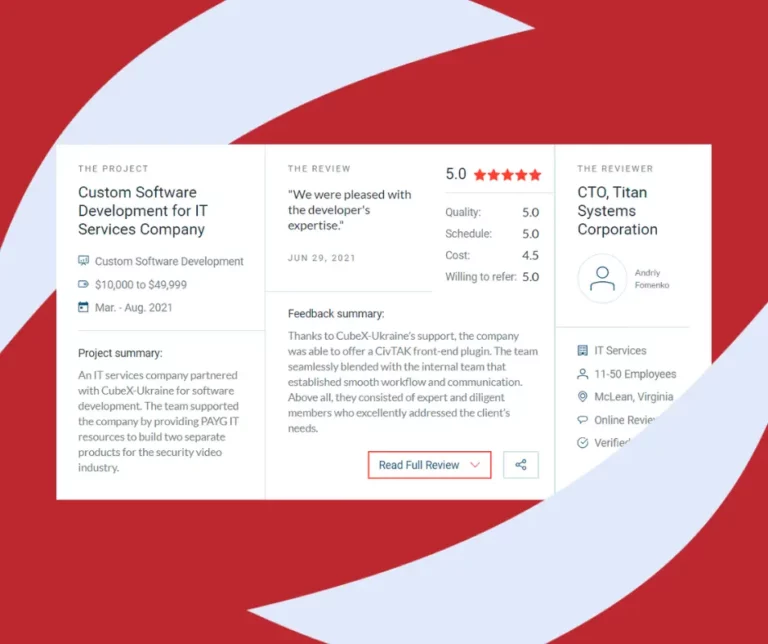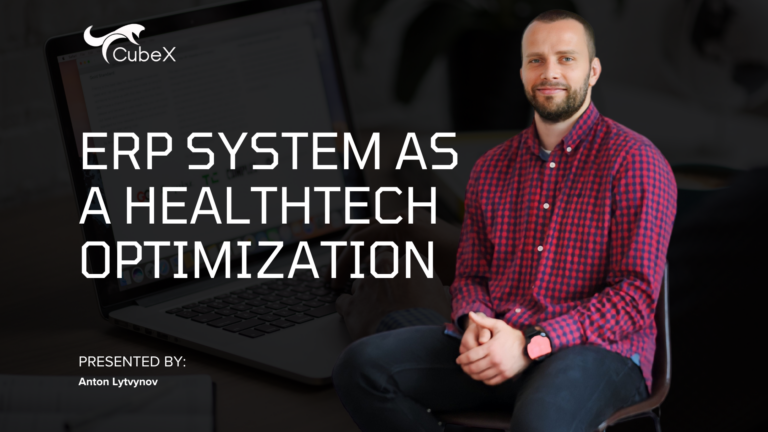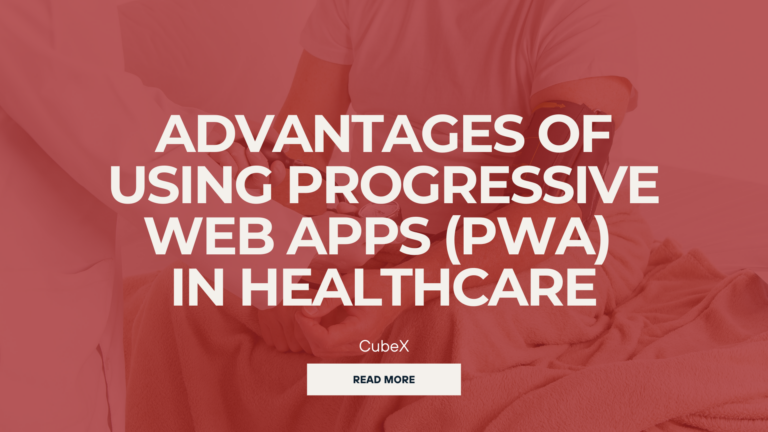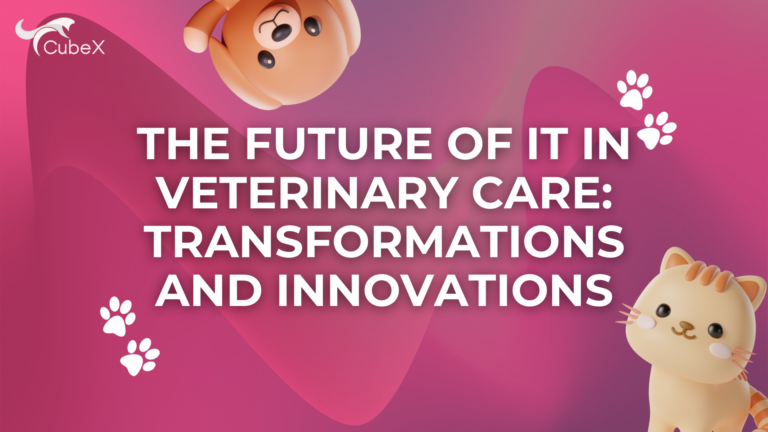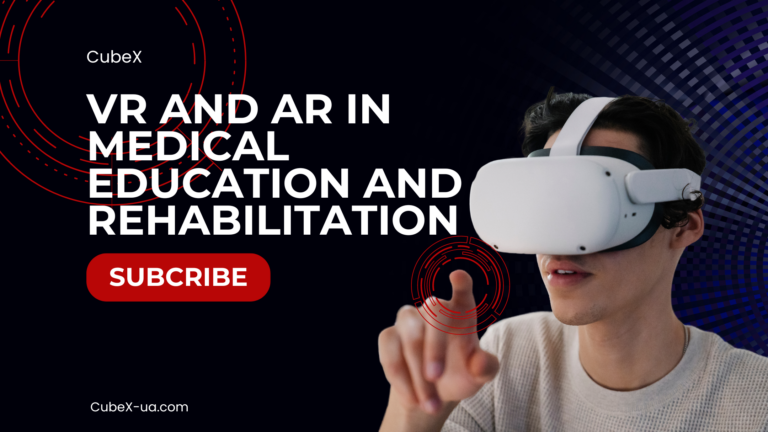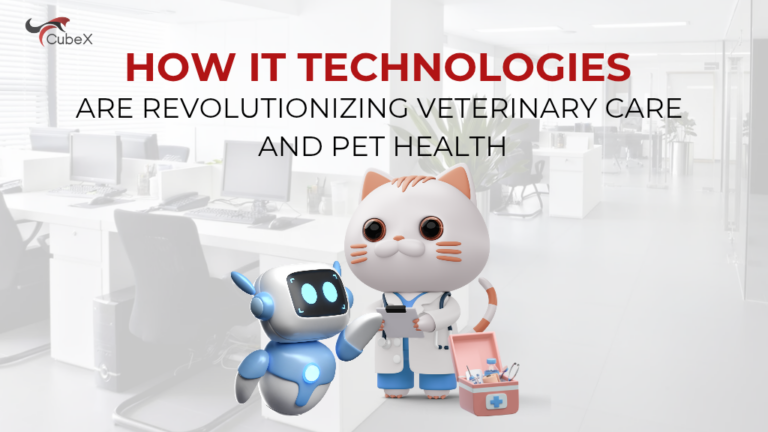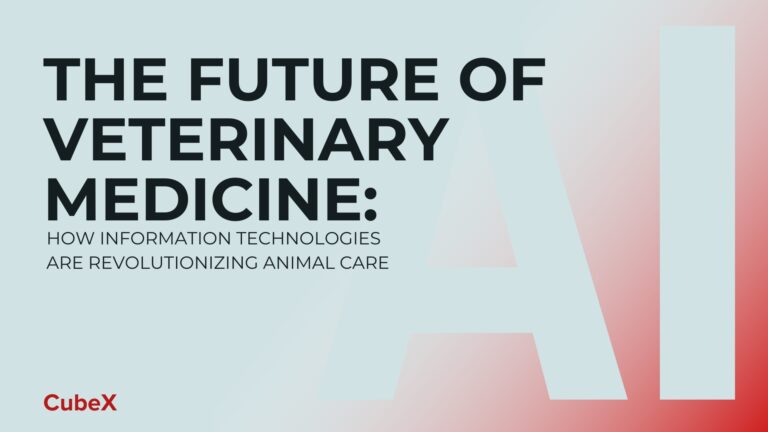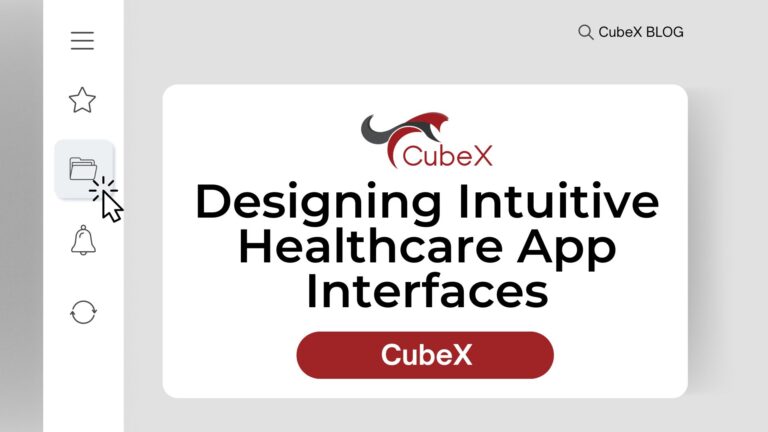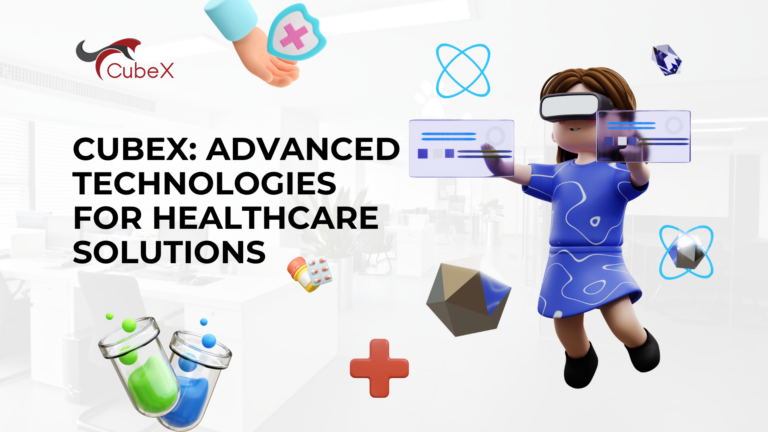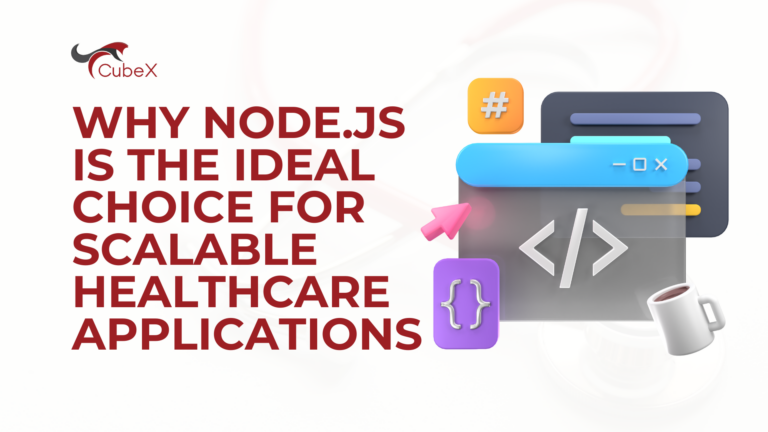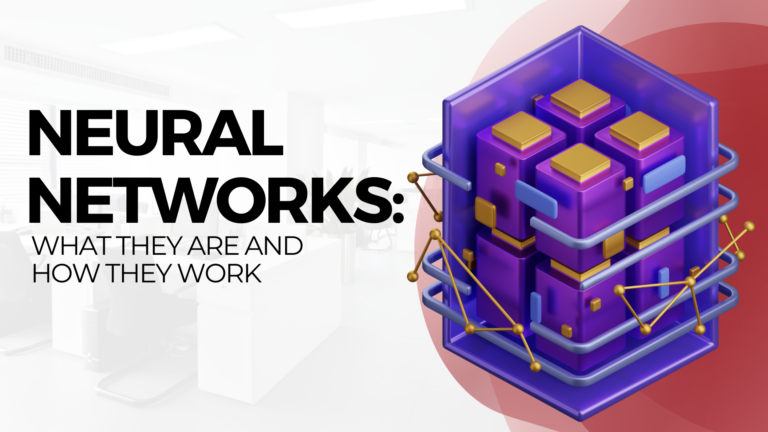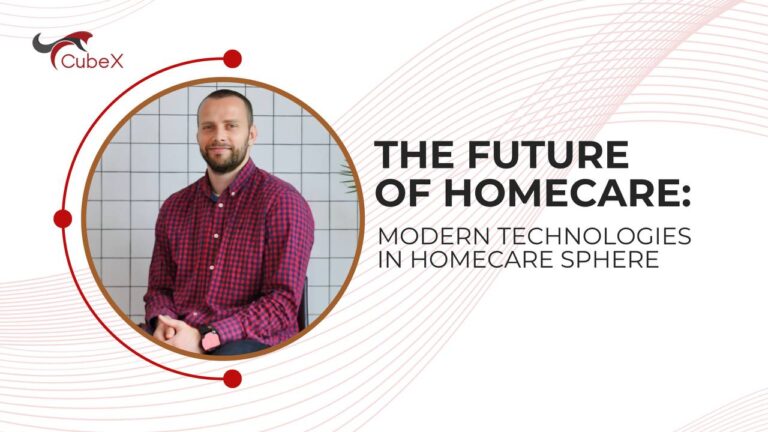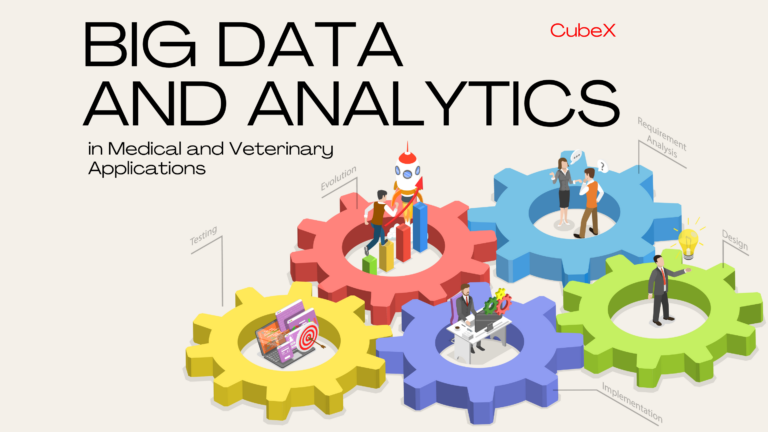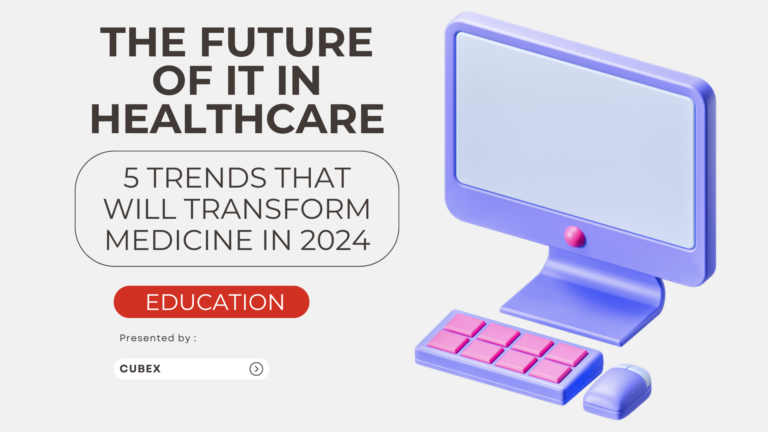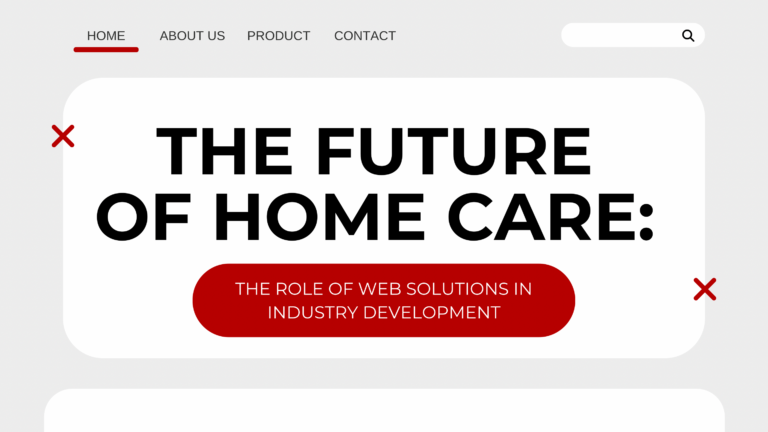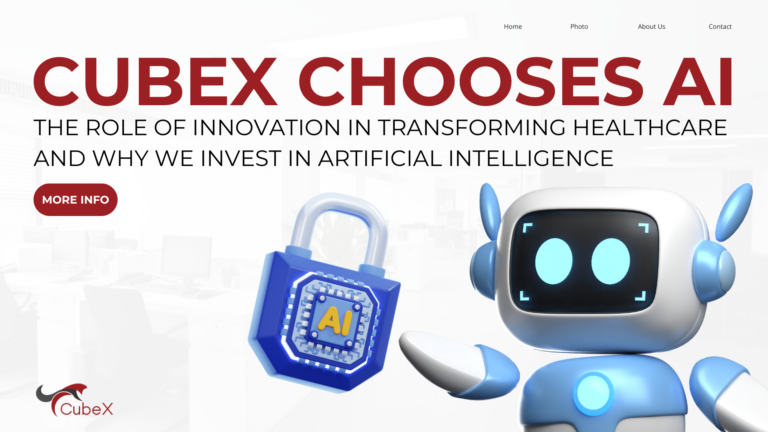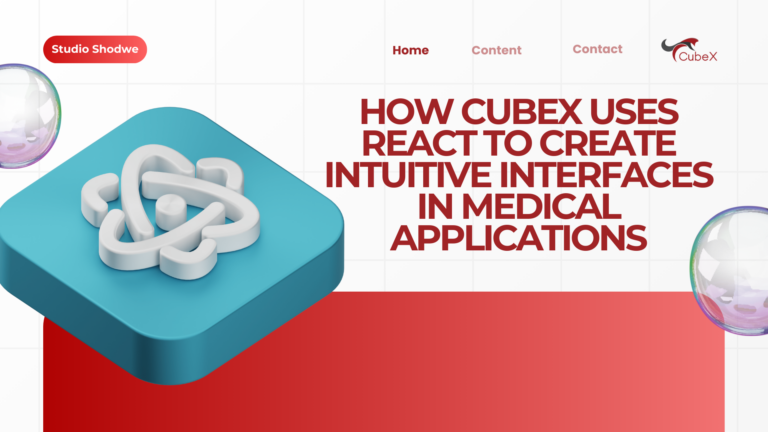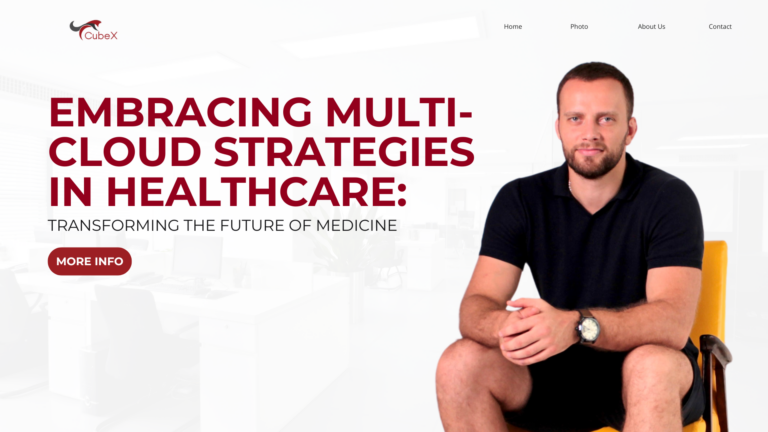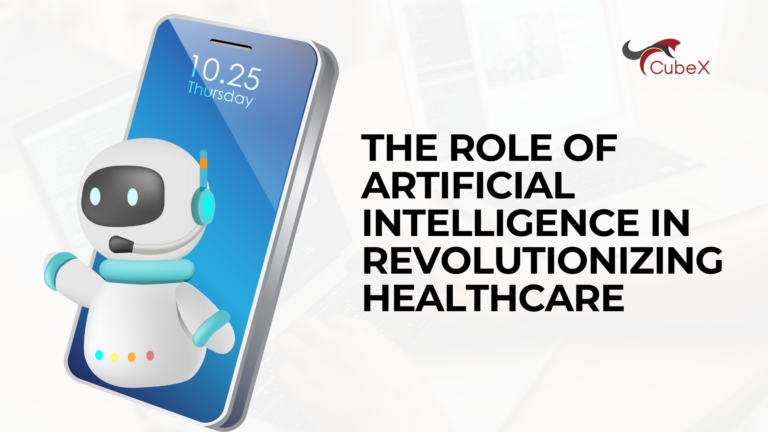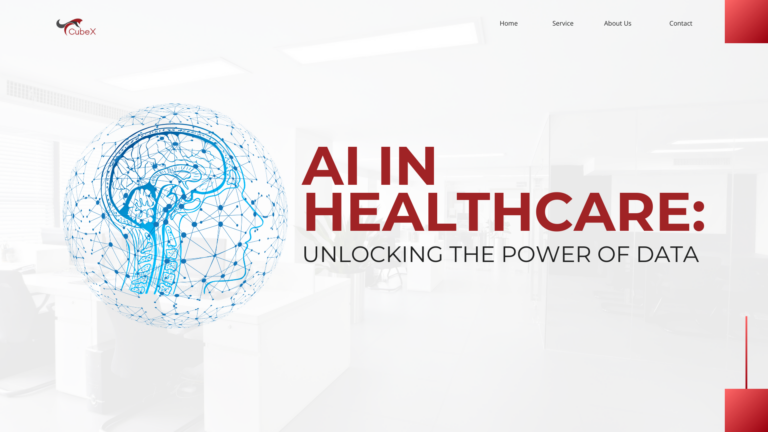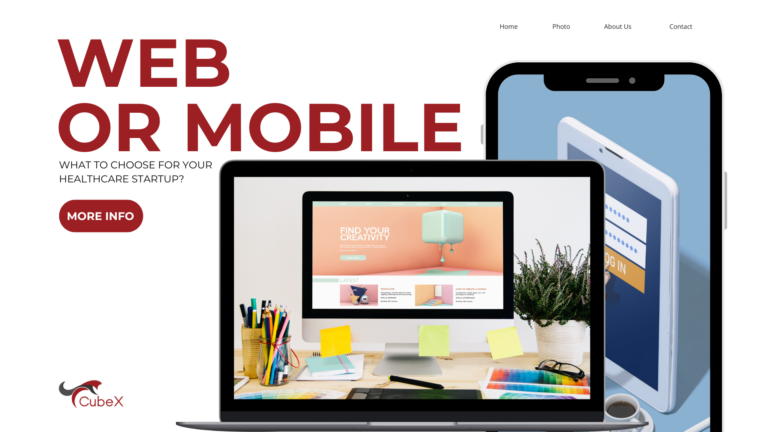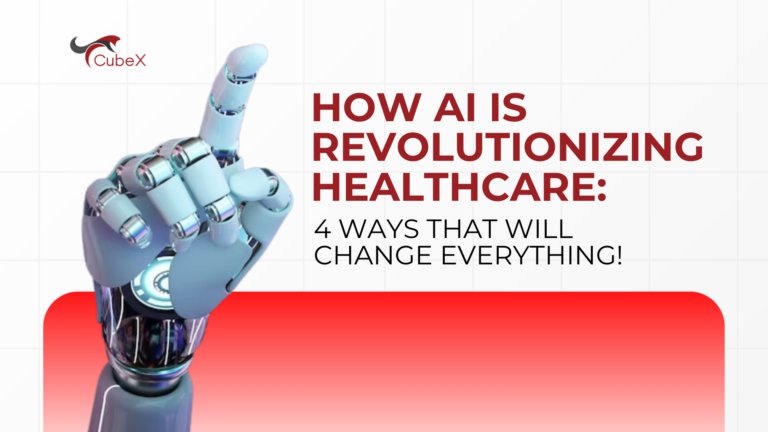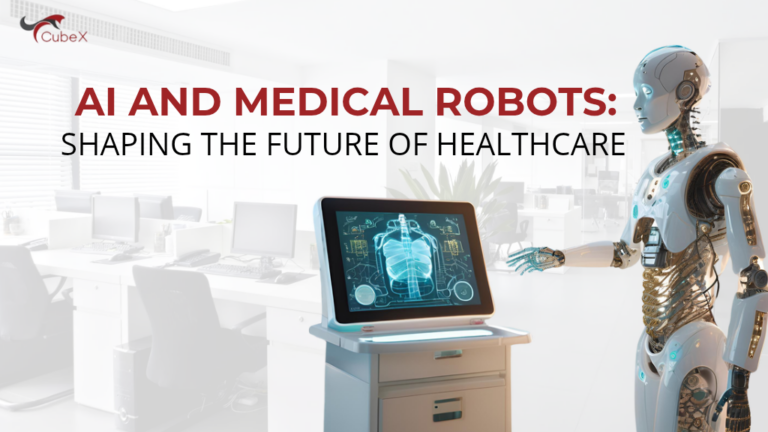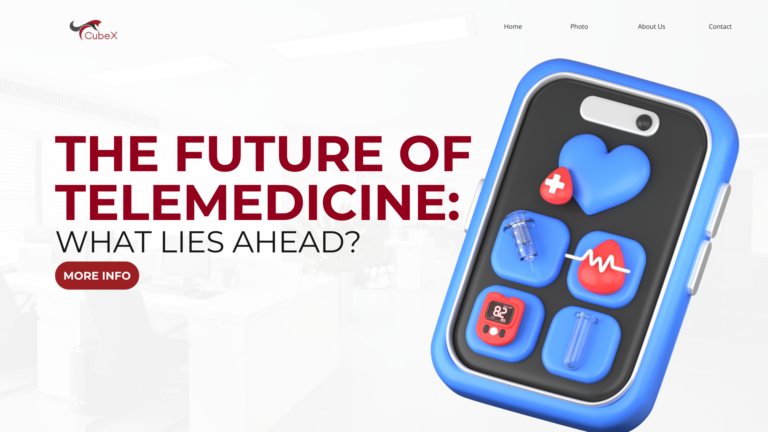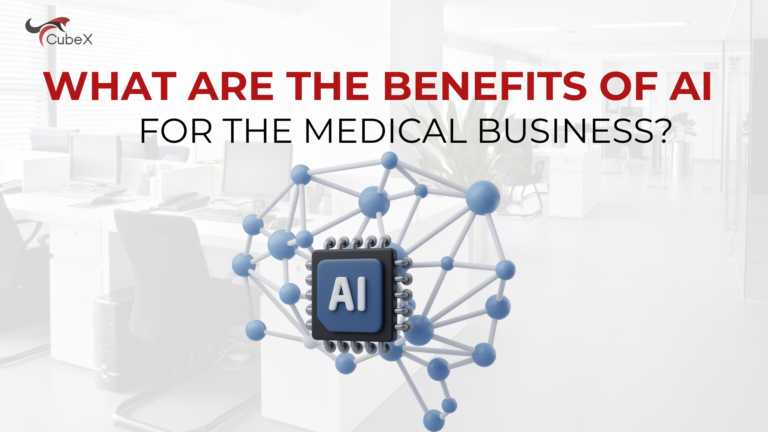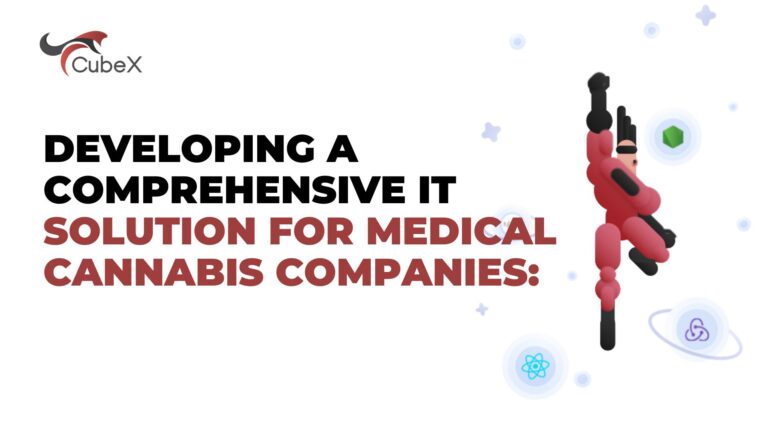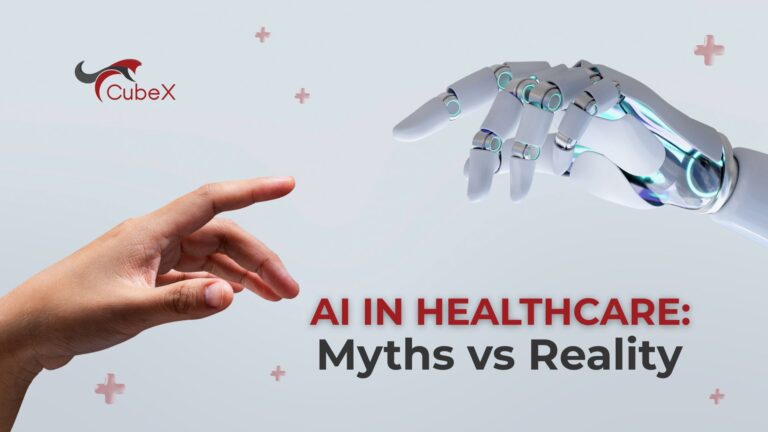The Future of IT in Healthcare: 5 Trends That Will Transform Medicine in 2024
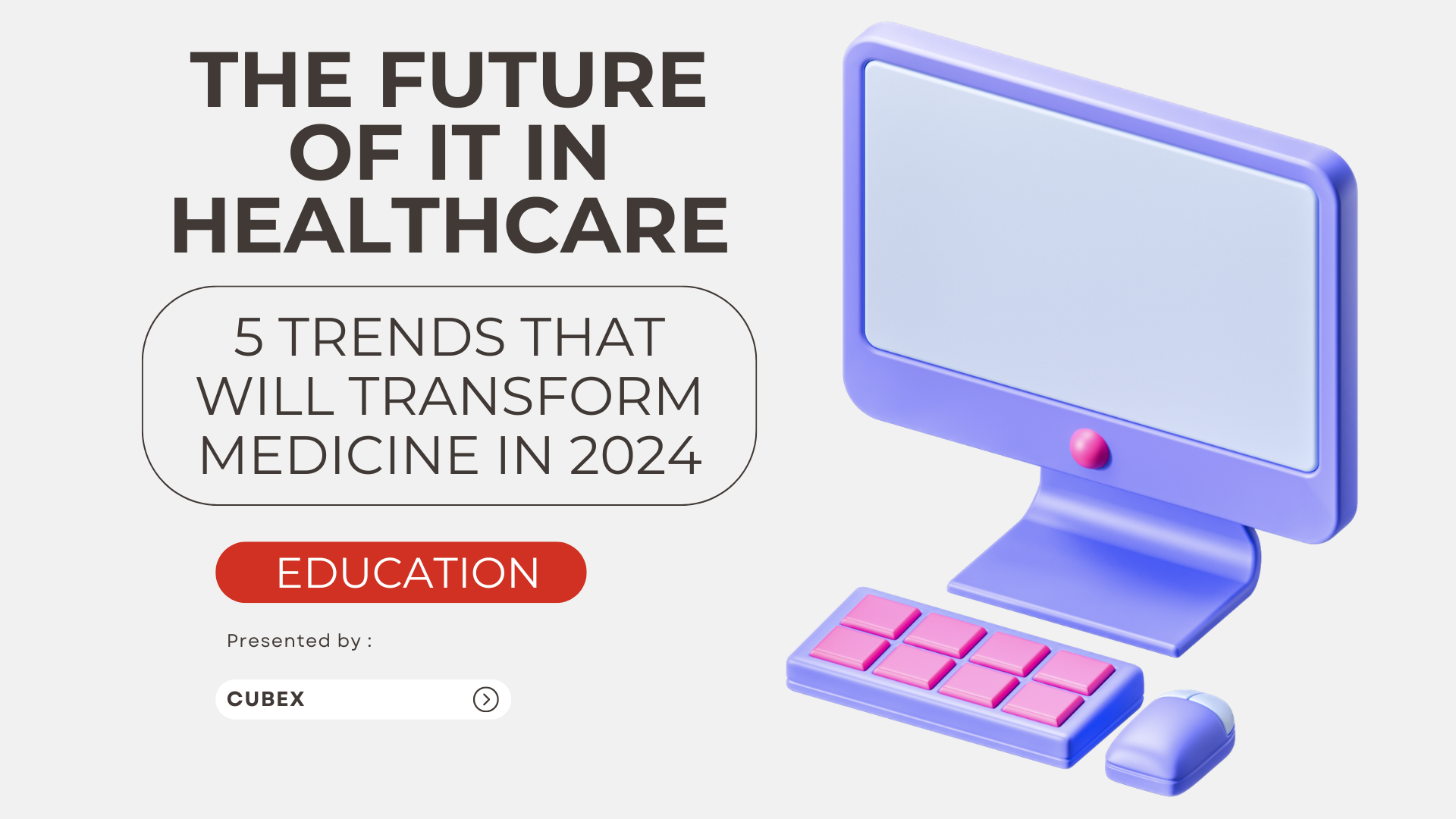
The convergence of healthcare and technology is set to revolutionize patient care in 2024, delivering faster, more personalized, and efficient medical solutions. Innovations like AI, telemedicine, and cybersecurity are reshaping how we approach treatment and diagnostics, promising a future where medicine is smarter, safer, and more interconnected than ever before.
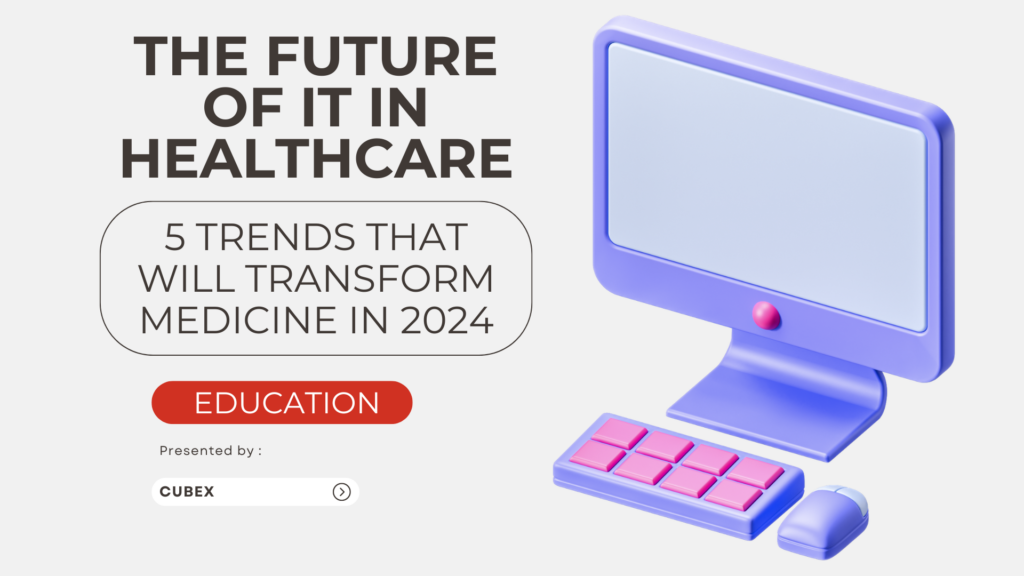
Let’s dive into the five most influential trends that are already transforming healthcare and will play a pivotal role in 2024.
1. AI and Machine Learning: The Backbone of Precision Medicine
Artificial Intelligence (AI) is no longer a buzzword—it’s the backbone of modern healthcare innovations. As we move into 2024, AI-powered solutions will redefine the landscape by providing personalized, data-driven healthcare options.
AI is already excelling in areas like medical imaging, where algorithms can detect abnormalities with greater precision than the human eye. Machine learning models are becoming essential for predicting disease outcomes, improving treatment plans, and even discovering new drugs. Imagine AI systems that monitor a patient’s health data in real-time and adjust treatment strategies on the go.
With AI’s help, physicians can now focus more on patient interaction and less on data analysis, leading to a significant reduction in diagnostic errors and improved patient care. As this technology becomes more ingrained, it will be pivotal in treating chronic diseases, tailoring therapies to individual genetics, and even predicting disease outbreaks.
2. Telemedicine 2.0: Beyond Virtual Consultations
Telemedicine was a game-changer in 2020, but the next generation of this technology is just beginning. Telemedicine 2.0, powered by wearable devices and IoT integration, will enable real-time monitoring of patients outside traditional healthcare settings. In 2024, telemedicine will extend far beyond virtual consultations and into continuous, remote patient management.
Wearable devices like smartwatches, ECG monitors, and glucose sensors will provide doctors with a constant stream of data. This shift will allow for early detection of health anomalies, enabling faster intervention and preventing serious complications. For example, a patient’s heart rate or glucose levels can be tracked in real-time, with AI algorithms alerting healthcare providers when values deviate from the norm.
This real-time data will empower doctors to make informed decisions, especially for patients with chronic conditions who require continuous supervision. The future of telemedicine will emphasize proactivity rather than reactiveness, focusing on prevention and early intervention.
3. Cybersecurity First: Protecting Patient Data in a Digital Age
As healthcare becomes more digitized, the risks associated with data breaches increase exponentially. The healthcare industry handles vast amounts of sensitive data, making it a prime target for cyberattacks. With the rise of telemedicine, AI, and data-driven platforms, cybersecurity must become a top priority in 2024.
New regulatory standards and technologies like blockchain and advanced encryption are emerging to safeguard patient information. Blockchain can create tamper-proof, decentralized records that enhance security and transparency in medical transactions. Advanced encryption will also protect data from unauthorized access, ensuring patient confidentiality.
In 2024, healthcare institutions will invest heavily in cybersecurity strategies that encompass everything from securing medical devices to implementing comprehensive data governance frameworks. As the industry adopts cloud-based solutions, ensuring these systems are both secure and compliant with regulations like GDPR and HIPAA will be crucial.
4. Interoperability: Breaking Down the Silos of Healthcare Data
The healthcare sector is notorious for fragmented systems that make it difficult to share medical information seamlessly across platforms. However, the trend toward interoperability is gaining momentum, and 2024 is likely to be a breakthrough year for this critical transformation.
Interoperability refers to the ability of different healthcare IT systems to exchange, interpret, and use medical data. Imagine a world where your medical history, lab results, and prescriptions can be accessed by any healthcare provider regardless of the system they use. This seamless flow of information will make consultations more efficient, reduce redundant tests, and improve treatment accuracy.
In the coming year, standardized protocols, APIs, and data formats will foster greater compatibility across systems. This will enhance collaboration between healthcare professionals, improve patient outcomes, and streamline the administrative burdens on healthcare providers.
5. Flexible Development Platforms: Customizable IT Solutions for Healthcare Providers
The rapid evolution of healthcare demands agile and adaptable IT solutions. In 2024, we anticipate a surge in flexible development platforms that enable healthcare institutions to customize applications according to their unique needs.
No two medical facilities are the same, and this growing trend acknowledges the need for tailored digital solutions. These platforms will allow healthcare providers to create, modify, and deploy apps quickly without needing extensive coding skills. As more health institutions adopt this approach, we’ll see a shift towards modular healthcare apps that can evolve with emerging technologies.
For instance, a hospital may need to quickly integrate a new telemedicine app or analytics tool to support remote monitoring of a growing patient base. These platforms will provide the flexibility and scalability needed to meet such demands, helping medical institutions keep up with the rapid pace of innovation.
Embracing the Future of Healthcare with CubeX
At CubeX, we’re at the forefront of integrating these game-changing technologies into healthcare systems worldwide. From AI-powered diagnostics to secure, interoperable platforms, our solutions are designed to make healthcare more accessible, effective, and safe. We believe that these trends are not just about innovation—they’re about improving lives and creating a healthier future for all.
Conclusion: What’s Next?
The future of IT in healthcare is filled with promise. As 2024 approaches, we’re on the cusp of a healthcare revolution powered by AI, telemedicine advancements, cybersecurity, interoperability, and customizable platforms. These innovations promise to make healthcare more patient-centric, efficient, and secure.
Contact Us
Please contact us for any further information







